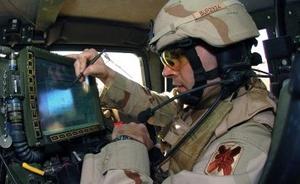Surge in counterfeit items in Pentagon's supplies
The U.S. Defense Department’s supply chain is vulnerable to the infiltration of counterfeit parts, potentially jeopardizing the lives of American soldiers; government investigators examined 387 companies and organizations which supply the U.S. Department of Defense, and found 39 percent of these companies and organizations encountered counterfeit electronics during the four-year period 2005-8; the number of counterfeit incidents grew from 3,868 in 2005 to 9,356 in 2008

The influx of counterfeit supplies endangers the troops in the field // Source: thetrumpet.com
The U.S. Defense Department’s supply chain is vulnerable to the infiltration of counterfeit parts, potentially jeopardizing the lives of American soldiers, according to two Democratic senators.
In an 6 August letter to Ashton B. Carter, undersecretary of Defense for acquisition, technology, and logistics, Senators Sherrod Brown of Ohio and Tom Carper of Delaware argued the Pentagon was not doing enough to protect the system from imitation supplies, many of which originate overseas. “Counterfeit parts manufactured offshore not only hurt American manufacturing and competitiveness, but in this case, have the potential to put our military at risk and jeopardize our national security missions,” Brown said.
Defense did not respond to a request for comment.
Government Executive’s Robert Brodsky writes that the letter cited two recent reports that detailed serious weaknesses in Defense’s ability to root out fake supplies. In January, the Commerce Department’s Bureau of Industry and Security found all elements of the Defense and international supply chain have been directly affected by counterfeit electronics.
The assessment, which covered 2005 to 2008, focused on discrete electronic components, microcircuits, and circuit board products. A total of 387 companies and organizations, representing all five segments of the supply chain — original component manufacturers, distributors and brokers, circuit board assemblers, prime contractors and subcontractors, and Defense agencies — participated in the study.
Investigators found 39 percent of companies and organizations encountered counterfeit electronics during the four-year period. The number of incidents grew from 3,868 in 2005 to 9,356 in 2008, the report said.
Brodsky quotes the report to say that “The rise of counterfeit parts in the supply chain is exacerbated by demonstrated weaknesses in inventory management, procurement procedures, record-keeping, reporting practices, inspection and testing protocols, and communication within and across all industry and government organizations.”
For example, several organizations told Commerce investigators they did not know who to contact in the federal government regarding counterfeit parts. Commerce recommended Defense consider establishing a centralized mechanism for reporting suspected counterfeit parts, and making the information available to industry and federal agencies.
The Government Accountability Office (GAO), meanwhile, reported in March that the extent of bogus parts in the supply chain was unknown because Defense had not agreed on a department-wide definition of the term “counterfeit,” or a consistent method to identify suspected cases of fake parts.
Two Defense databases track deficient parts — those that do not conform to department standards — but they are not designed to track counterfeit supplies. A third government-wide database that can track suspected counterfeit parts receives little information because of perceived legal implications of reporting prior to a full investigation, GAO said.
“DoD does not currently have a policy or specific processes for detecting and preventing counterfeit parts,” the watchdog said. “Existing procurement and quality-control practices used to identify deficient parts are limited in their ability to prevent and detect counterfeit parts in DoD’s supply chain.”
Security experts worry that while some of the counterfeiting is done for monetary gain, other incidents of counterfeit hardware are the product of efforts by foreign intelligence services — especially the Chinese — to plant hardware with “back doors” in U.S. defense department’s computers and servers (“Operation targeting counterfeit network hardware from China yield convictions, seizures,” 12 May 2010 HSNW).
Defense officials told GAO they plan to refine the department’s counterfeit risk mitigation strategy, including issuing industry-wide and department-wide guidance by the end of 2010. The guidance also would include a single definition for counterfeit parts.
